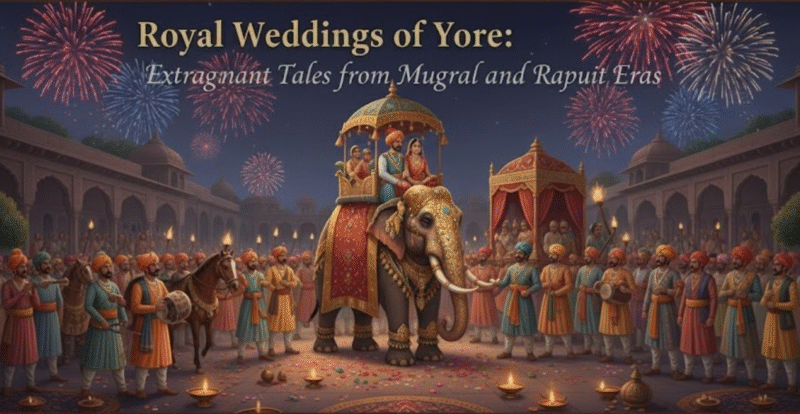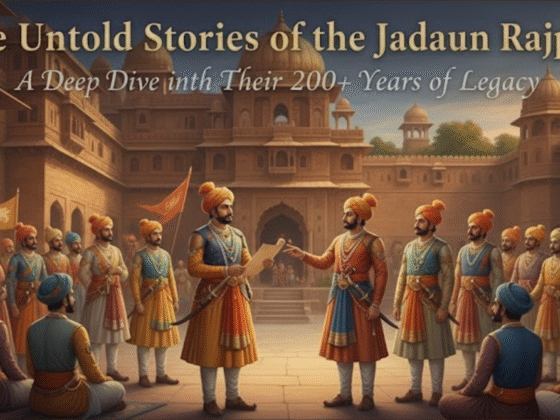Introduction to Royal Weddings in India
Royal weddings have always captured the imagination of people around the world. In India, these celebrations were not just unions between two individuals; they were grand spectacles that showcased power, wealth, and cultural heritage. The Mughal and Rajput eras stand out for their extravagant tales of love and opulence, where each wedding was a story woven with intricate traditions and lavish ceremonies. From ornate palaces adorned with jewels to vibrant processions filled with music and dance, every detail was meticulously crafted to leave an indelible mark on history.
Step into a world where romance mingled with royalty as we explore the royal weddings of yore: extravagant tales from the Mughal and Rajput eras that continue to inspire modern-day celebrations. These events were more than mere ceremonies; they represented alliances forged in grandeur, offering a glimpse into a time when love knew no bounds—only boundaries defined by kingdoms. Join us as we journey through time to uncover the richness of these legendary unions!
The Mughal Era: Grandeur and Opulence
The Mughal Era, spanning from the early 16th to the 18th century, was a time of breathtaking splendor. Royal weddings during this period were nothing short of magnificent spectacles.
Imagine lavish palaces adorned with intricate carvings and shimmering fabrics. These weddings were grand events that showcased immense wealth and artistry. The use of gold, precious gems, and luxurious textiles created an atmosphere dripping in opulence.
Ceremonies often lasted several days and involved elaborate processions featuring elephants and camels laden with gifts. Musicians would fill the air with enchanting melodies while dancers mesmerized attendees with their graceful performances.
Food played a central role too—lavish feasts included countless dishes prepared by skilled chefs. Each wedding celebrated not just love but also power, prestige, and cultural richness that defined an era revered for its grandeur.
The Rajput Era: Tradition and Rituals
The Rajput Era is a mesmerizing tapestry woven with vibrant traditions and rich rituals. These royal weddings were not just unions; they were grand celebrations of valor and heritage.
Each ceremony was steeped in symbolism, showcasing the cultural ethos of the time. The bride often adorned herself in stunning lehengas, embellished with intricate craftsmanship that told tales of their lineage.
One notable ritual was the Sangeet, where music echoed through palatial halls. Families gathered to celebrate love through dance and song, solidifying bonds between clans.
The grandeur reached its zenith during the vidaai when brides left their parental homes for new beginnings. This poignant moment captured both joy and sorrow—a bittersweet farewell filled with promise.
Every detail mattered—from the mehndi designs on a bride’s hands to the elaborate mandaps decorated with flowers. Each element spoke volumes about honor, tradition, and celebration within this regal framework.
A Look into the Ceremonies and Customs
Ceremonies and customs surrounding royal weddings in India were steeped in rich symbolism. Each ritual held a deep significance, reflecting the cultural heritage of the time.
From intricate mehndi designs to elaborate sangeet functions, every event was a lavish affair. The bride adorned herself with exquisite jewelry that often included heirlooms passed down through generations. These pieces not only embellished her beauty but also represented family legacy.
Another highlight was the ‘baraat,’ where the groom would make a grand entrance accompanied by music, dancing, and sometimes even elephants or horses. This festive procession set an exuberant tone for the celebrations ahead.
Rituals such as ‘kanyadaan’ symbolized surrendering of the bride by her family to her husband’s care. Meanwhile, fire ceremonies (havan) served as sacred witnesses to vows exchanged between couples—a timeless bond forged under divine auspices.
Iconic Royal Weddings of the Mughal Era
The Mughal Era was a dazzling time for royal weddings, brimming with grandeur that left an indelible mark on history. One of the most iconic unions was between Emperor Shah Jahan and Mumtaz Mahal in 1612. Their love story inspired the creation of the Taj Mahal, a symbol of eternal devotion.
Another remarkable wedding took place when Akbar married Jodha Bai. This alliance not only united two powerful dynasties but also fostered cultural exchange, blending traditions from both sides.
Then there’s the wedding of Aurangzeb’s daughter to Sultan Muzaffar Shah II in 1665. The elaborate celebrations showcased opulent attire, magnificent processions, and lavish feasts that echoed throughout the empire.
These weddings were more than mere ceremonies; they represented power dynamics and alliances crucial to maintaining control over vast territories while highlighting the rich tapestry of Mughal culture.
Legendary Royal Weddings of the Rajput Era
The Rajput era is renowned for its legendary royal weddings, where every celebration was steeped in splendor. These unions often symbolized alliances between powerful kingdoms.
One of the most illustrious was the wedding of Maharana Pratap Singh to Maharani Ajabde Punwar. This union not only united two noble lineages but also showcased breathtaking festivities adorned with vibrant colors and artistic performances.
Another unforgettable event was the marriage of Sawai Jai Singh II to Maharani Kishori. Their grand ceremony featured elaborate processions, complete with elephants dressed in rich fabrics and musicians playing traditional melodies that echoed through the palaces.
These weddings were characterized by meticulous rituals and a deep sense of tradition, making each one unique. From intricate mehndi designs to lavish feasts, they reflected both culture and grandeur that remain etched in history.
Comparison of Modern-Day Weddings to Ancient Times
Modern-day weddings often reflect a blend of cultural influences, technology, and personalization. Couples today have the freedom to craft unique experiences that resonate with their identities. Destination weddings and themed celebrations are now common.
In contrast, ancient royal weddings were grand spectacles steeped in tradition and ritual. The focus was on lineage and alliances rather than individual choice. These ceremonies showcased opulence through elaborate attire, intricate jewelry, and lavish feasts.
While today’s couples may prioritize intimacy over extravagance, Mughal and Rajput unions dazzled with sheer scale. Thousands attended these events, turning them into social milestones for entire kingdoms.
Moreover, modern couples rely heavily on digital platforms for planning and sharing their special day. This accessibility starkly contrasts with the exclusivity surrounding royal ceremonies of yore when every detail was meticulously orchestrated by skilled artisans under royal patronage.
Evolution of Indian Wedding Trends Over the Years
The landscape of Indian weddings has transformed dramatically over the years. From lavish, multi-day celebrations in sprawling palaces to intimate gatherings in personalized venues, change is evident.
Traditionally, weddings were about family and community involvement. Today, many couples are opting for destination weddings that reflect their unique personalities. Themes have taken center stage – rustic charm or tropical vibes dominate modern ceremonies.
Fashion also plays a pivotal role in this evolution. While heavy lehengas and sherwanis ruled the past, contemporary brides and grooms now favor lighter fabrics with intricate designs that allow freedom of movement.
Technology influences every aspect as well. Live streaming allows distant relatives to partake in nuptials they once couldn’t attend. Drones capture breathtaking aerial shots while social media immortalizes these precious moments instantly.
As trends evolve, one thing remains constant: the celebration of love transcends time and culture.
Legacy and Influence
The legacy of royal weddings from the Mughal and Rajput eras continues to influence modern Indian nuptials in profound ways. These historical ceremonies set a benchmark for elegance, showcasing opulence that many contemporary weddings aspire to replicate.
Elements such as elaborate decorations, intricate rituals, and vibrant attire draw inspiration from these regal unions. The fusion of tradition with modern aesthetics has given rise to unique wedding themes that reflect cultural heritage while embracing current trends.
Moreover, royal weddings have also shaped societal norms surrounding marriage in India. They highlight the significance of family ties and communal celebrations that still resonate today. As couples plan their big day, they often find themselves enchanted by stories of emperors and royalty—infusing their own celebrations with grandeur reminiscent of yesteryear.
In this way, the tales from those extravagant times not only preserve history but also inspire love stories unfolding today. Each wedding becomes a canvas where age-old customs meet new beginnings—a reminder that while times change, the essence of celebrating love remains timeless.



